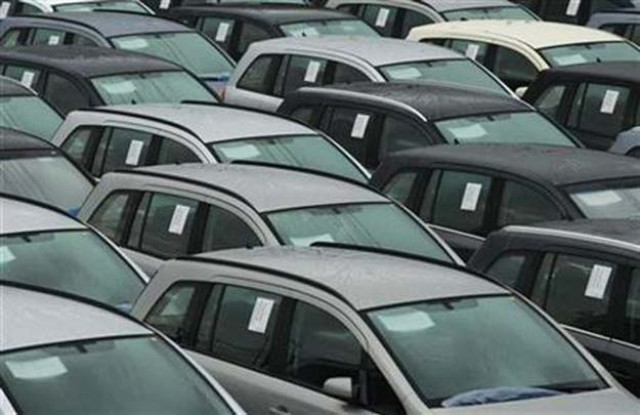'EVs, mass transit can improve air quality'
Pollution remains high throughout the year: report

Amid Lahore's worsening air quality seriously impacting the health of citizens, while also posing a threat to biodiversity, WWF-Pakistan has laid out a plan to promote electric vehicles (EV), enhance sustainable development models, segregate industrial zones, expand mass transit networks and switch to renewable energy sources for improving the environment.
The country's leading environmental conservation organisation established as part of the global WWF network has published policy recommendations and shared strategic insights gathered from the collection and analysis of the air quality data published since 2013. The data underscores that the city's air quality is severely degraded and the pollution levels remain high throughout the year.
The report found that key contributors to worsening air quality included vehicular emissions, crop residue burning, industrial processes and coal combustion.
Commenting on the study, WWF-Pakistan Director General Hammad Naqi Khan said that worsening air quality and persistent smog is a serious issue not only for the people but also the biodiversity, especially birds and other animals.
"The adoption of electric vehicles can help reduce vehicular emissions that lead to poor air quality. However, financial subsidies and establishing EV charging infrastructure are essential for the transition to electric vehicles" he added.
The report also recommends the widespread use of low-cost sensor-based monitoring systems, which can effectively measure pollutants and are relatively economical, thereby filling the gaps in air quality monitoring infrastructure. Khan stated, "These low-cost air quality monitoring systems can be used to identify air pollution hotspots and can also be synchronised with traffic management.
For example, the provision of alternate routes to avoid traffic congestion or prohibiting heavy transport vehicles in certain areas can reduce localised emissions amidst the already compromised air quality."
The report indicates that fine particulate matter such as PM2.5, carbon monoxide (CO), ozone (O3), nitrogen dioxide (NO2) and sulphur dioxide (SO2) are among the most harmful pollutants affecting public health. Lahore's population, exceeding 13 million residents, faces serious health risks due to the deteriorating air quality.
WWF-Pakistan Freshwater Programme Director Sohail Ali Naqvi stated, "Lahore consistently ranks among the most polluted cities globally with high concentration of pollutants. The rapid rise in the number of vehicles in Lahore and surrounding cities emit significant quantities of pollutants. Industrial activities including factories and poorly regulated brick kilns also exacerbate air quality."
Additionally, when farmers burn agriculture residues, it causes periodic spikes in the pollution levels in surrounding areas.
The report makes medium and long-term recommendations to tackle some of the issues, including the capacity building of farmers on crop residue management, where non-profit organisations could play a critical role.
It also recommends the expansion of a mass transit network, the designation of industrial zones and the shifting of industries from urban areas to the zones.
The organisation's Climate and Energy Director Nazifa Butt called for an action plan that aims at promoting renewable energy sources and enforcing compliance in the industrial sector. She was of the view that shifting of leather, textile and steel industries from conventional coal and diesel-based power generation systems to solar energy can significantly decrease air pollutants. "Industries emitting high levels of pollutants must install relevant pollution control devices," she remarked.
To improve the air quality in Lahore, the report recommended mandatory vehicular emission testing, integrated traffic management, crop residue management through capacity building and alternative uses, and minimising dust from the construction sector.



















COMMENTS
Comments are moderated and generally will be posted if they are on-topic and not abusive.
For more information, please see our Comments FAQ